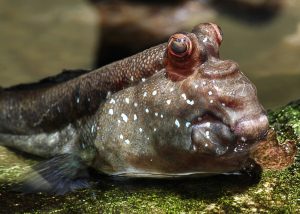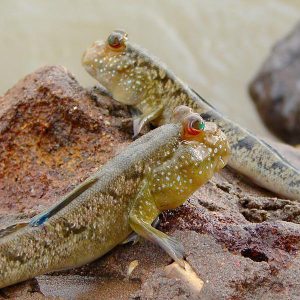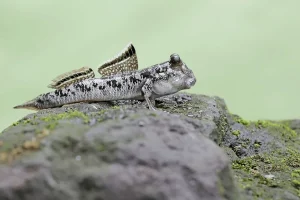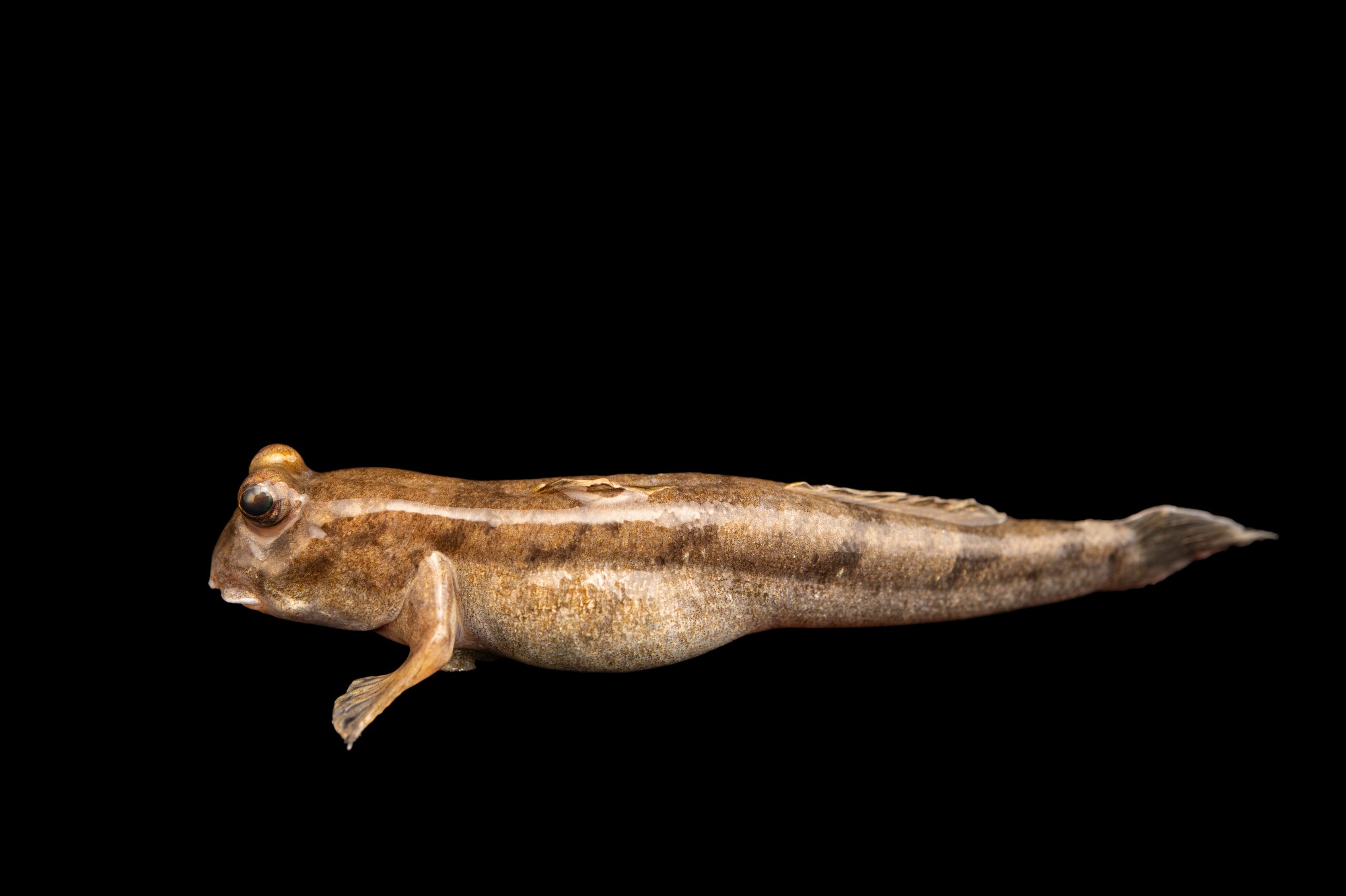 The barred mudskipper (Periophthalmus argentilineatus) is a fascinating amphibious fish species found in mangrove habitats throughout the Indo-Pacific region, including the southwestern Indian Ocean. These fish are well adapted to both terrestrial and aquatic environments, using their pectoral fins to “walk” on land and their gills to breathe underwater.
The barred mudskipper (Periophthalmus argentilineatus) is a fascinating amphibious fish species found in mangrove habitats throughout the Indo-Pacific region, including the southwestern Indian Ocean. These fish are well adapted to both terrestrial and aquatic environments, using their pectoral fins to “walk” on land and their gills to breathe underwater.
Population studies of barred mudskippers in the southwestern Indian Ocean would likely focus on understanding their distribution, abundance, and habitat preferences within mangrove ecosystems. A researcher from Sokoine University of Agriculture, in the College of Agriculture at the Department of Animal, Aquaculture and Range Sciences “Dr. Cyrus Rumisha” uses a combination of field surveys, genetic analysis, and environmental monitoring to assess population dynamics and identify factors influencing their survival and reproduction.
The research findings reveal a significant level of genetic homogeneity among these populations, despite of differences in administrative boundaries. The study indicates that genetic exchange occurs among these populations, displaying a remarkable similarity in their genetic makeup. This genetic homogeneity suggests a strong connection and exchange of genetic material among Barred mudskipper populations in the southwestern Indian Ocean, transcending geographical borders and management variations.
In the past 24 years, the Southwestern Indian Ocean (SWIO) region has lost about 4% of its mangroves due to unsustainable extraction, land clearance for agriculture, and climate change impacts. Since this loss risks fragmenting mangrove fauna, this study analyzed 179 D-loop sequences (329 base pairs) of Barred mudskipper (Periophthalmus argentilineatus) sampled from estuarine mangroves in the SWIO to test two hypotheses of whether Barred mudskipper populations in the region display genetic connectivity along the fragmented mangroves and whether these populations have experienced demographic declines in recent history.
 The populations showed low and insignificant indices of genetic differentiation (FST = −0.00068, p > 0.05; ΦST = 0.005, p > 0.05), and haplotypes from different localities did not cluster according to their geographical origins. Similarly, Bayesian phylogenetic analysis grouped all SWIO haplotypes into one cluster, suggesting the hypothesis of genetic interconnectedness could not be rejected.
The populations showed low and insignificant indices of genetic differentiation (FST = −0.00068, p > 0.05; ΦST = 0.005, p > 0.05), and haplotypes from different localities did not cluster according to their geographical origins. Similarly, Bayesian phylogenetic analysis grouped all SWIO haplotypes into one cluster, suggesting the hypothesis of genetic interconnectedness could not be rejected.
Furthermore, the populations showed high haplotype diversity (0.96 ± 0.007) combined with low nucleotide diversity (1.09 ± 0.61%). They also showed significant negative Tajima’s D values (−1.71, p < 0.02) and a unimodal mismatch distribution, indicating the hypothesis of demographic expansion post a historical bottleneck could not be rejected. Nevertheless, the Bayesian skyline plot indicated an increase in population size post-bottleneck, suggesting an ongoing recovery.
These findings indicate that, despite varying management approaches in the SWIO, Barred mudskipper populations exhibit genetic exchange that transcends geographical and administrative borders. This implies that their populations should be considered a single stock within the region. These findings underscore the need for coordinated management approaches among the SWIO countries. This is crucial because inconsistencies in conservation measures across borders could disrupt the population’s interconnectedness, potentially impacting their genetic integrity and long-term survival.
 Given the importance of mangrove habitats for numerous species, including the barred mudskipper, conservation efforts often target the preservation and restoration of these ecosystems. The genetic homogeneity among barred mudskipper populations in the southwestern Indian Ocean is quite remarkable. It suggests that these populations have been relatively stable and connected over time, despite geographical barriers that might have been expected to lead to genetic divergence.
Given the importance of mangrove habitats for numerous species, including the barred mudskipper, conservation efforts often target the preservation and restoration of these ecosystems. The genetic homogeneity among barred mudskipper populations in the southwestern Indian Ocean is quite remarkable. It suggests that these populations have been relatively stable and connected over time, despite geographical barriers that might have been expected to lead to genetic divergence.
The findings also emphasize the resilience and adaptability of this species to various environmental conditions and reinforce the importance of maintaining connectivity between populations for their long-term survival.0
This study also underlines the need for further research to understand the mechanisms underlying this genetic homogeneity and how it might be influenced by factors such as ocean currents, habitat connectivity, and human activities. However, protecting mangrove forests helps to safeguard not only the biodiversity they support but also the valuable ecosystem services they provide, such as coastal protection and carbon sequestration.

For more information CLICK HERE
Rumisha, C. (2024). Transcending borders: Remarkable genetic homogeneity among Barred mudskipper (Periophthalmus argentilineatus) populations in the southwestern Indian Ocean. African Journal of Ecology. https://doi.org/10.1111/aje.13259
The Department of Animal, Aquaculture, and Range Sciences
The College of Agriculture, Sokoine University of Agriculture
Share this page

